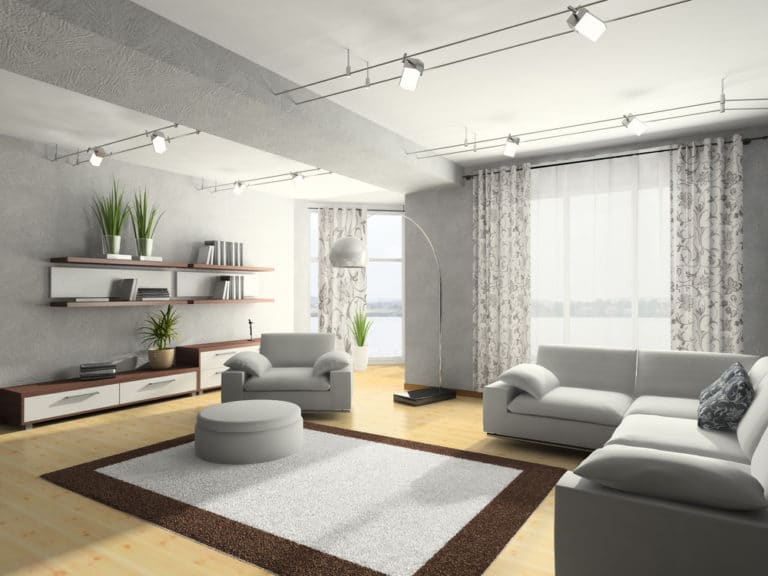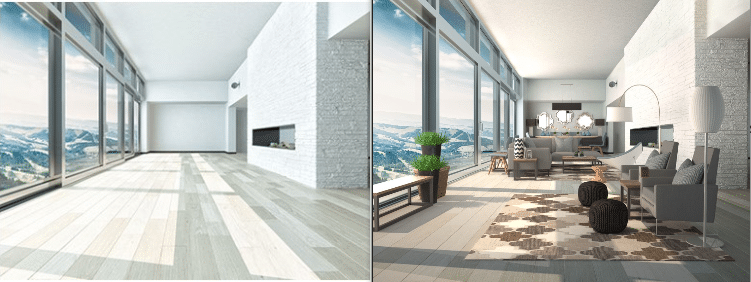
One of mobile AR’s prevailing use cases in early days is visualizing in-home furniture placement. Embraced so far by big names like IKEA, Houzz and Amazon, furniture visualization is a utility that sustains beyond AR novelty.
This is a principle that XR-based furniture visualization company roOomy is built on, but it takes things a step further. It helps consumers visualize new furniture placement, but bolts that to a logical context: real estate sales.
This is meant to bring together multiple benefits: It lets furniture retailers demo their products in a natural format, while also letting real estate professionals “stage,” homes and apartments in a more effective (and cheaper) way. And consumers benefit all along.
“We can showcase a property to its full potential,” roOomy BD Director Taylor Wilding told ARtillry, “and at the same time enhance the experience for the home shopper as they can furnish their new home right within the same context.”

Domino Effect
Combining all of these components has created a sort of Yin and Yang in roOomy’s interlinked business model. It’s established a diversified revenue stream including its 3D modeling and rendering technology, affiliate revenue for furniture sales, and per-listing fees from agents.
The first domino to tip according to Wilding is 3D models. It converts home furnishing retailers’ 2D catalogues into dynamic, 3D assets. This approach eliminates lots of friction and scales well, as shown by the 120,000 3D models currently in roOomy’s library.
Using a combination of those images plus visual assets from retailers, it then gains affiliate revenue for any furniture that’s purchased while consumers are checking out new homes. This natural habitat for furniture can boost buyer intent and conversions.
“A differentiating piece for us is that we’re helping retailers intercept customers at an earlier part of the buying cycle, during a home purchase,” said Wilding. “Someone moving will spend on furniture upwards of 5x what someone who isn’t moving will spend.”
Lastly, real estate agents themselves pay roOomy on a per-listing basis. And they tend to be early adopters, given a hunger for tools that help them move such big-ticket items. There’s also cost savings in virtual staging, and further incentive through a cut of furniture sales.
“With virtual stagings it’s the law of large numbers,” said Wilding. “The more we have, the more furniture we’ll sell. And to get real estate professionals to truly embrace it, they need to make that affiliate revenue, and sell the apartment or the house easier and for more money.”

Stagecraft
As for integrating 3D models with interior imagery, roOomy once again applies a low-barrier method that can work with 2D images already captured by most real estate professionals. The end result is 360 imagery that can be augmented remotely, as well as live on-site.
“When someone’s looking for a home, they could to be looking from their office or current home on an iPad or computer with images overlaid,” said Wilding. “But when you walk in, you can also view it in AR and move products around to see what they look like in that space.”
As for AR visualizations, roOomy pre-dates ARCore and ARkit but they could still help advance its capability. This has a lot to do with their software approach that puts AR into half a billion users’ hands. But better depth sensing advancements will be critical for roOomy.
“When it comes to virtual staging and having things in perspective — for instance putting a rug underneath a coffee table — there still are constraints,” said Wilding. “But because they’re software-based, ARkit and ARCore will be easier and more readily updated.”
ARkit and ARCore also condition users for mobile AR. As eCommerce giants like Amazon and Wayfair embrace in-home product visualizations in their own apps, consumers will get acclimated to it. That could create demand for, and comfort with, roOomy’s core user experience.
“As eCommerce sites launch ARKit apps, it’s becoming more and more familiar. People understand exactly how to use it,” said Wilding. “And since ARCore and ARkit have been released, our modeling business for home furniture retailers has taken off.”
For a deeper dive on AR & VR insights, see ARtillry’s new intelligence subscription, and sign up for the free ARtillry Weekly newsletter.
Disclosure: ARtillry has no financial stake in the companies mentioned in this post, nor received payment for its production. Disclosure and ethics policy can be seen here.
